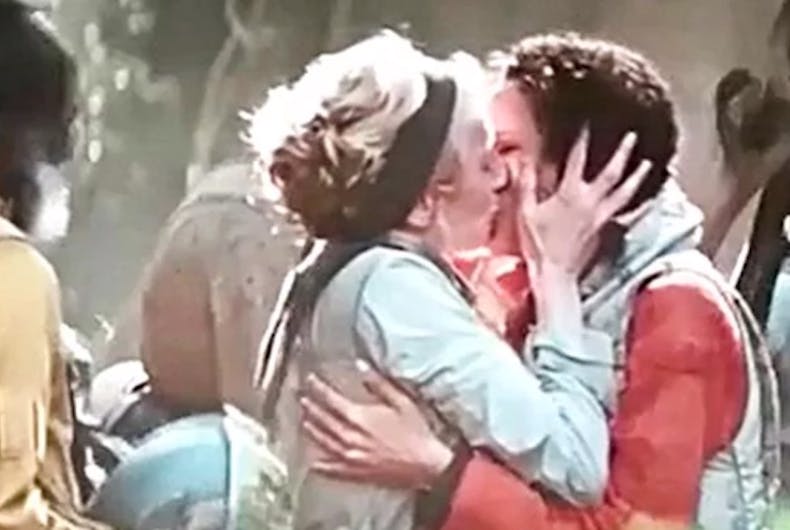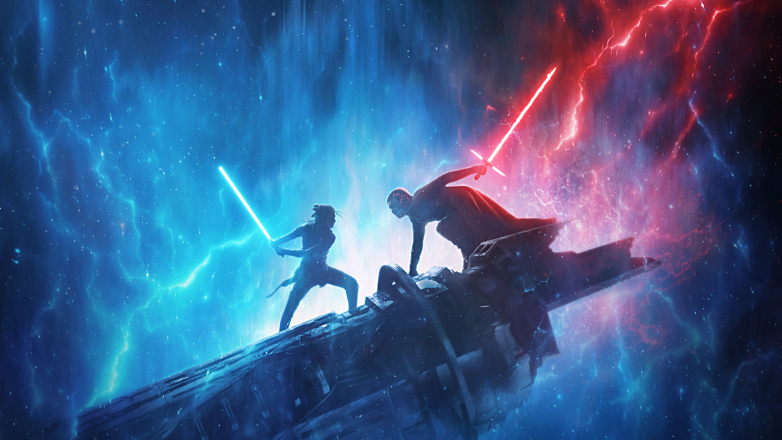Disney Messed Up the LGBTQ Representation in Star Wars: The Rise of Skywalker
January 20, 2020
Spoilers for the Star Wars film series.
Droids. Lightsabers. The Force. Darth Vader’s mask. The Millenium Falcon. The Death Star.
You’d be hard pressed to find someone with no knowledge of the Star Wars universe. Even those who have managed to avoid watching the movies usually have a decent idea of what happens in the iconic film series. Since the release of Star Wars: A New Hope in 1977, the film series has amassed a huge following world-wide, giving the movies a large range of influence.
This influence is why representation and diversity are so important, especially within these movies. If people from not only the Americas, but also Europe and Asia are going to be watching these movies, people from diverse cultures, backgrounds, and beliefs, it’s great when they can see themselves in the beloved characters. Whether it’s introducing Poe Dameron, who is played by a Guatemalan-American actor, Oscar Isaac, or casting a black actor, John Boyega, as one of the lead characters in the new trilogy, audiences are slowly being given the representation they deserve‒for the most part.
When the press tour for the newest movie, Star Wars: The Rise of Skywalker, began in 2019, the director, J.J. Abrams hinted at potential LGBTQ representation in the new film, although he denied a potential romance between the ex-stormtrooper Finn and the Resistance pilot Poe Dameron, a relationship which fans had been pressing for since the release of Star Wars: The Force Awakens.
Because of this, many were disappointed when the so-called representation for the LGBTQ community was a short, hard to spot kiss between two minor female characters that appeared in the background of one of the shots. (Pictured below.)

(Image via LGBTQ Nation)
While this was certainly a step in the right direction, many felt that it was another example of Disney’s token queer baiting‒promising or hinting at LGBTQ representation in order to get queer viewers interested but not living up to such promises in the actual film. This isn’t a new tactic for Disney, either. LeFou in the live action Beauty in the Beast was advertised as a milestone for Disney as one of the first gay characters, yet the actual film showed little evidence of this. These small attempts at representation don’t do anything to help the fight for representation and diversity in media. While they may be nice, it seems forced, as if Disney is doing it simply for the diversity points.
And displays like these may not even be helping with overall representation. As The Hollywood Reporter puts it, “touting these few moments as groundbreaking perpetuates the idea that small amounts of representation is sufficient, when in reality it isn’t.” The same-sex kiss was even cut from the movie in Singapore, a country that doesn’t recognize same-sex marriage. The argument behind the decision was that Disney wanted to keep the movie to a PG-13 rating, which it likely wouldn’t have been given if the kiss had been kept it. While this rational is sound, the decision just evoked more backlash.
For me, this all was made even worse by the missed opportunity to create a gay love story between Poe and Finn. Instead of allowing the “natural progression” of their friendship into romance, as Oscar Isaac (Poe Dameron) called it, Disney decided to give Poe a straight love interest in Zorii, Keri Russell’s mysterious character, and shoehorned the gay kiss in the background instead of allowing a gay romance to play out in the foreground of the movie. Some argue that this is because the Star Wars movies have never been particularly romantic, but the newest installment featured a kiss between Rey and Kylo Ren before he died tragically in her arms, and the original trilogy featured a love triangle between Leia Organa, Luke Skywalker, and Han Solo before it was revealed that Leia and Luke were siblings. If these other characters were allowed to find love in the Star Wars movies, why couldn’t Finn and Poe? The actors both have spoken out in support of the relationship, but Isaac has said that Disney was “too afraid” to go through with it. Unfortunately, this summarizes Disney’s general view on LGBTQ representation: they claim to support the queer community, but ultimately are too afraid to allow that kind of representation in their movies. With Disney such a powerhouse in modern media, such representation might never see the light, as it would necessitate Disney reconciling with the idea of losing money in countries in which same-sex relationships aren’t legal or accepted.
Overall, the tiny kiss scene felt like a forced attempt at diversity that felt all too familiar in today’s culture of small acts of diversity meant more to appease than to represent minorities. This was made even worse by cutting out the scene in Singapore and ignoring the chance to give two of the main characters the gay love story that fans had been wanting. It shouldn’t have been surprising, with Disney’s history of under-representation, but every attempt at diversity that falls short feels like another attack on the LGBTQ community. Ultimately, this was simply another ill-handled attempt to gain brownie points for a small, inadequate amount of representation.





















































































































































